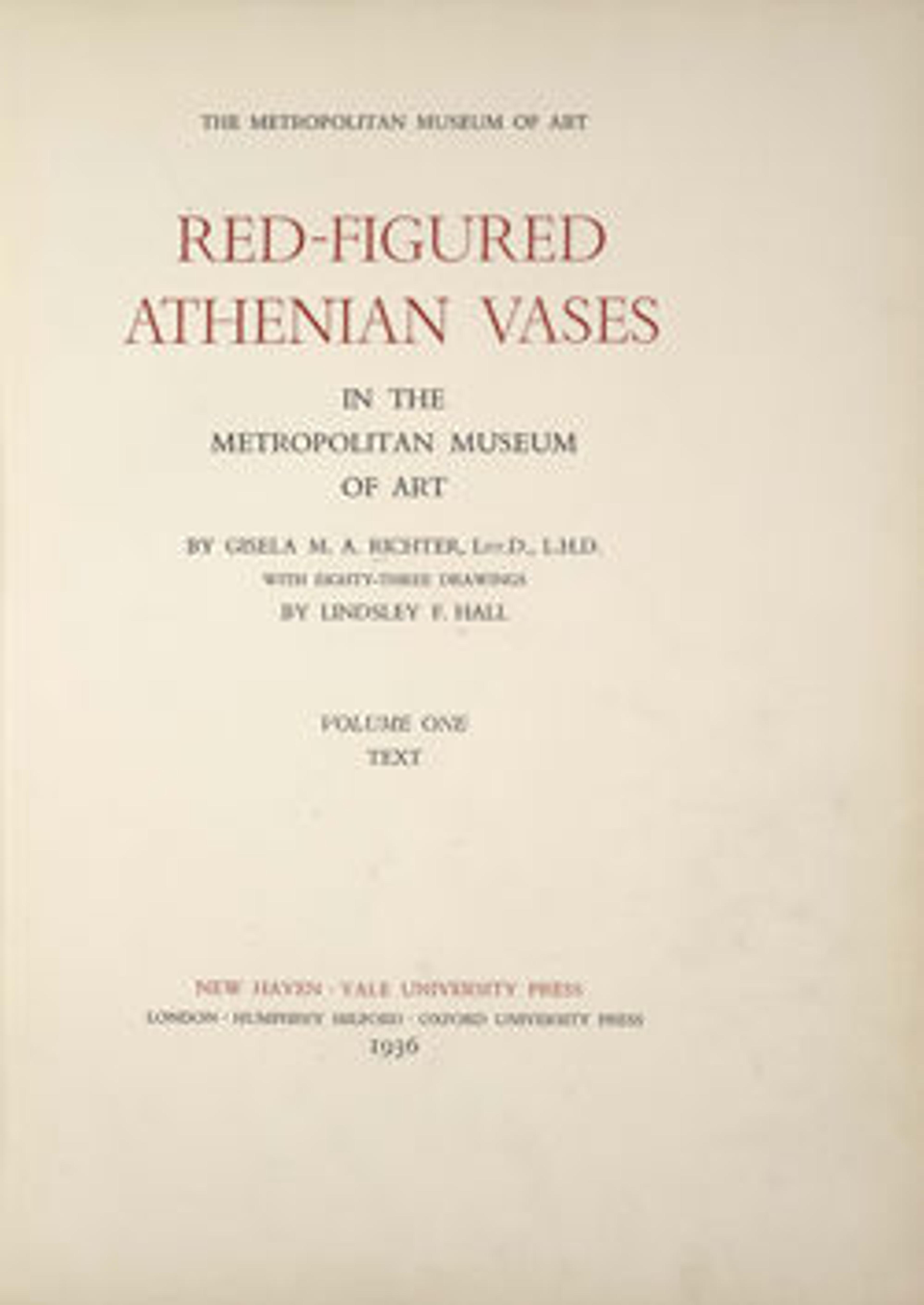Terracotta bell-krater (bowl for mixing wine and water)
Obverse, kitharode and three male listeners
Reverse, three youths
The principal scene shows a young man performing for three listeners. The instrument is a kithara, the type of lyre used for formal presentation. The artist's concern is to convey the response of each figure, from the deep introversion of the seated man to the gesture of the person behind him. This representation is characteristically classical in its emphasis on a state of being rather than on a narrative event.
Reverse, three youths
The principal scene shows a young man performing for three listeners. The instrument is a kithara, the type of lyre used for formal presentation. The artist's concern is to convey the response of each figure, from the deep introversion of the seated man to the gesture of the person behind him. This representation is characteristically classical in its emphasis on a state of being rather than on a narrative event.
Artwork Details
- Title:Terracotta bell-krater (bowl for mixing wine and water)
- Artist:Attributed to Polygnotos
- Period:Classical
- Date:ca. 450–440 BCE
- Culture:Greek, Attic
- Medium:Terracotta; red-figure
- Dimensions:H. 14 3/16 in. (36 cm); diameter of mouth 15 1/16 in. (38.2 cm)
- Classification:Vases
- Credit Line:Rogers Fund, 1921
- Object Number:21.88.73
- Curatorial Department: Greek and Roman Art
More Artwork
Research Resources
The Met provides unparalleled resources for research and welcomes an international community of students and scholars. The Met's Open Access API is where creators and researchers can connect to the The Met collection. Open Access data and public domain images are available for unrestricted commercial and noncommercial use without permission or fee.
To request images under copyright and other restrictions, please use this Image Request form.
Feedback
We continue to research and examine historical and cultural context for objects in The Met collection. If you have comments or questions about this object record, please contact us using the form below. The Museum looks forward to receiving your comments.
